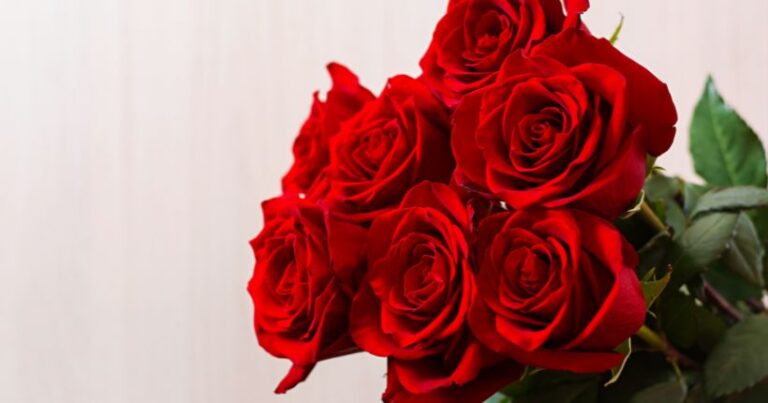Red roses. They’re everywhere, but they’re never just background. They show up when words fall short and emotions run high. They sit in the middle of romantic clichés and genuine confessions. And yet, we never really ask: why?
What makes a red rose so loaded with feeling? So universally understood, yet endlessly complex?
If you’ve ever wanted to unravel what’s behind that single, dramatic bloom, you’re in the right place. We’re peeling back the layers of red roses meaning, and they go far beyond romance.
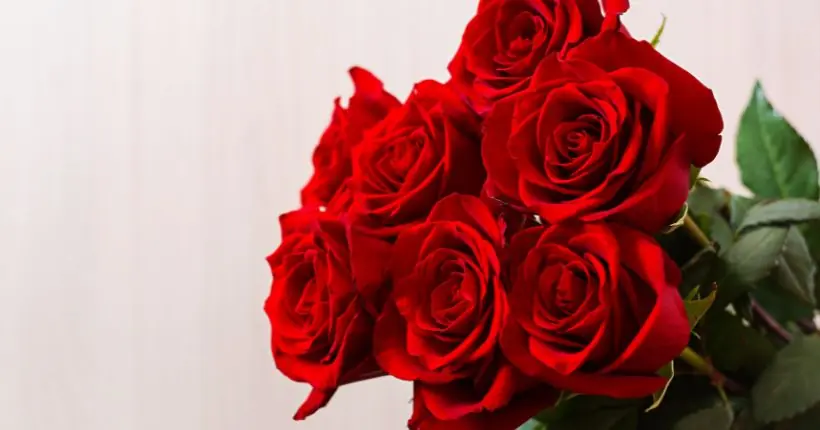
What Do Red Roses Symbolize?
The red rose is a symbol we all recognize, but few stop to think about what it truly represents. Beyond the obvious gesture of romantic love, red roses carry a rich tapestry of meanings: emotional, social, and even political.
Let’s explore two of the most compelling associations:
Love and Passion
No flower wears its heart on its petals quite like the red rose. It’s not shy. It doesn’t play it cool. When you give or receive one, it doesn’t just say “I love you.” It shouts it from the rooftops, with full chest, full color, full emotion.
Historically, red roses have always been the go-to symbol for romantic love that borders on obsession, the kind that makes poets lose sleep and artists lose their minds. Think of Sappho’s verses, dripping with longing. Think of Botticelli’s Venus, often crowned in roses. The red rose isn’t just romantic, it’s romanticized.
Culturally, it bridges gaps across time and borders. In Persian poetry, red roses are symbols of divine and earthly love, often paired with the nightingale in metaphors of longing. In 19th-century France, red roses became the floral equivalent of a love letter, tucked into corsets or pressed into pages.
Emotionally, red roses trigger excitement. That’s not just poetic,it’s neurological. Studies in color psychology show red stimulates our pulse and evokes urgency. So yes, red roses make hearts race,for very real reasons.
Courage and Respect
Red isn’t just the color of love, it’s the color of bravery. Red roses are also symbols of honor, sacrifice, and respect. They’re often found at ceremonies honoring soldiers, leaders, or individuals who’ve displayed extraordinary courage.
In some cultures, presenting a red rose is less about romantic affection and more about recognizing someone’s integrity or strength. Whether it’s a single bloom handed to a survivor or a dozen roses at a memorial, the gesture conveys silent reverence.
So, the next time someone hands you a red rose, pause for a second. Is it love? Or is it honor? Or maybe, beautifully, it’s both.
Historical Significance of Red Roses
Before red roses became the Instagram favorite, they had a past, one steeped in mythology, politics, and underground communication. To understand the red roses’ meaning, we have to go back.
Ancient Civilizations
In Mesopotamia and ancient Egypt, red roses were linked to fertility goddesses like Inanna and Isis. These cultures saw roses not just as ornamental but as deeply spiritual, used in sacred rites and to honor femininity (no wonder they are still the symbol of Women’s Day across the globe).
The Greeks and Romans elevated the red rose into legend. As mentioned, Aphrodite (or Venus, to the Romans) was often depicted surrounded by red roses, which were said to have sprung from the ground where her lover Adonis bled. A symbol born from love and loss.
Even in early Christianity, red roses became associated with the blood of Christ and martyrdom, proof that passion and sacrifice were already intertwined in their meaning.
Medieval and Victorian Eras
By the Middle Ages, red roses had become emblems in war and politics. The War of the Roses in 15th-century England pitted the House of Lancaster (red rose) against the House of York (white rose), a floral civil war that lefta lasting symbolism in British culture.
In the Victorian era, the red rose was a code. Lovers sent them to confess feelings they weren’t allowed to say aloud. The intensity of the red, the openness of the bloom, the number of stems,all carried messages.
It was a silent but emotional language that lovers, rebels, and poets alike relied on.
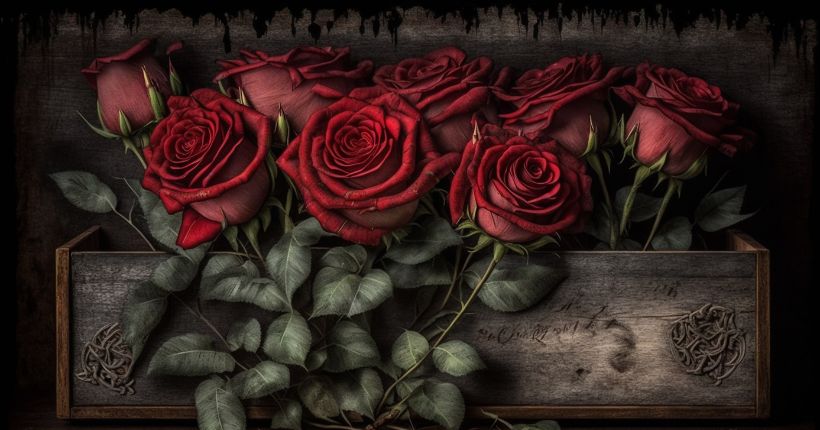
Cultural Interpretations Around the World
Though the red rose is widely recognized, how it’s interpreted shifts across cultures,sometimes in ways that surprise.
Eastern Traditions
In Chinese culture, red is a lucky color symbolizing happiness, prosperity, and celebration. While red roses are often used in romantic contexts, they’re also appropriate in festive arrangements for the New Year, weddings, or business milestones.
However, caution is key, because red flowers in excess or in certain combinations can also be associated with death. Context is everything.
In Japanese culture, the red rose is a direct declaration of love, often reserved for passionate confession. Unlike the subtlety favored in many Japanese traditions, the red rose says: I’m all in.
Middle Eastern and South Asian Perspectives
In many Middle Eastern cultures, red roses signify deep respect and admiration. They’re gifted to mothers, teachers, and elders, not just romantic partners. The flower transcends gender and relationship status, acting as a universal symbol of esteem.
In South Asia, red roses are part of wedding rituals, religious ceremonies, and love poems. They are found in the ghazals of Urdu poetry and in Bollywood cinema as both romantic and spiritual motifs.
The Language of Red Roses
What if a bouquet could speak? Turns out,it can. The red rose has its own dialect, rich with meaning.
Number of Roses and Their Meanings
Every number tells a story, and when it comes to red roses, the number of stems can dramatically shift the message. Here’s what some of the most iconic numbers mean (and why they matter):
- 1 red rose – It’s direct. It’s powerful. One red rose isn’t trying to impress with numbers, it’s saying, “I choose you. Singularly, intentionally.” It’s the kind of flower you give on a first date when you want to make a quiet but confident impression. It’s also the perfect way to reignite a spark with someone who already knows your heart.
- 12 red roses – This is the classic dozen. The full set. A cultural shorthand for commitment and devotion. Twelve red roses are often used for anniversaries, Valentine’s Day, or as a dramatic “just because” gesture that says: “I love you, thoroughly and completely.” There’s symmetry in the number, one for each month, perhaps. Or one for each reason you fell in love.
- 50 red roses – Not just a bouquet, a statement. Fifty red roses scream everlasting passion. This is for the grand gestures, the bold confessions, the love that doesn’t hold back. Perfect for milestone birthdays, big romantic reconciliations, or over-the-top proposals. It says: “You’re not just someone, I’m all in.”
- 100 red roses – The ultimate symbol of total, unconditional love. One hundred roses aren’t subtle. They’re overwhelming on purpose. This is the bouquet for a once-in-a-lifetime romance, the kind you celebrate on a golden anniversary, a wedding vow renewal, or to honor a love story that has weathered everything.
Whether you’re keeping it quiet with one or going all out with a hundred, the number of red roses you choose is more than just a count, it’s a message, one that speaks volumes in petals.
This language isn’t just for fun,it was used in Victorian England as a coded form of courtship. Every petal, every count, every shade carried emotional significance.
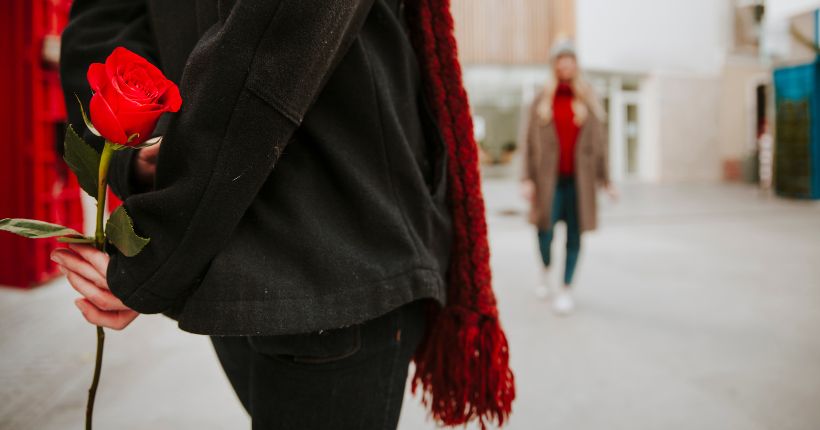
Shades of Red and Their Nuances
Not all reds are created equal, and neither are the emotions behind them. The exact shade of a red rose can tweak the message in powerful ways. Here’s how:
- Bright red – The classic. This is the Hollywood red, the one we associate with true love, deep romance, and Valentine’s Day confessions. It’s a bold color that works well for first anniversaries, proposals, or to reignite passion in long-term relationships.
- Dark crimson – This rich, almost velvety shade leans more into sorrow, depth, and remembrance. It’s a color you might choose for a romantic partner who has passed or to honor a complicated, soulful kind of love. It’s especially fitting for memorials or as a tribute on the birthday of someone no longer here.
- Cherry red – Playful and youthful, cherry red brings flirtation and energy into the room. Great for spontaneous gestures, Valentine’s for new relationships, sending flowers to your crush, or even a bold birthday gift for someone who loves color and charm. It says: “I adore you, and I’m having fun doing it.”
- Burgundy – Mysterious and elegant, burgundy is the rose of subtle passion. It’s often used in autumn weddings, cozy anniversary dinners, or intimate celebrations. This shade whispers rather than shouts, perfect for people who love deeply but don’t wear their heart on their sleeve.
So next time you’re choosing red roses, don’t just think about the number,think about the shade. Because red isn’t just red. And love isn’t just one thing.
Red Roses in Modern Occasions
Today, red roses still dominate our most emotional moments. But their use has expanded well beyond traditional romance.
Celebrations and Milestones
Red roses have graduated from just being the poster child for romantic gestures. Now, they’re showing up wherever passion, growth, and personal triumph are being honored. Why? Because few things say “this moment matters” like a deep red bloom.
Here are a few milestone-worthy occasions where red roses absolutely belong:
- Graduations – Whether it’s high school, college, or a late-in-life degree, red roses say: “You did the work. You earned this.”
- Anniversaries – Classic and timeless, red roses mark each passing year with renewed passion. From one-year celebrations to golden milestones, they’re the go-to way to say, “I still choose you.”
- Birthdays – Especially for someone who loves deeply, laughs loudly, and lives fully. A bold bouquet on their special day adds emotion to the celebration.
- Promotions & Career Wins – A red rose bouquet at a promotion dinner says, “You earned this. You gave it your heart.”
- Book Launches, Business Openings, or Retirement Parties – Red roses celebrate perseverance. They say: “This wasn’t easy. But you did it. And it matters.”
Red roses in these settings aren’t about grand romance, they’re about acknowledging the fire it takes to chase something big and see it through.
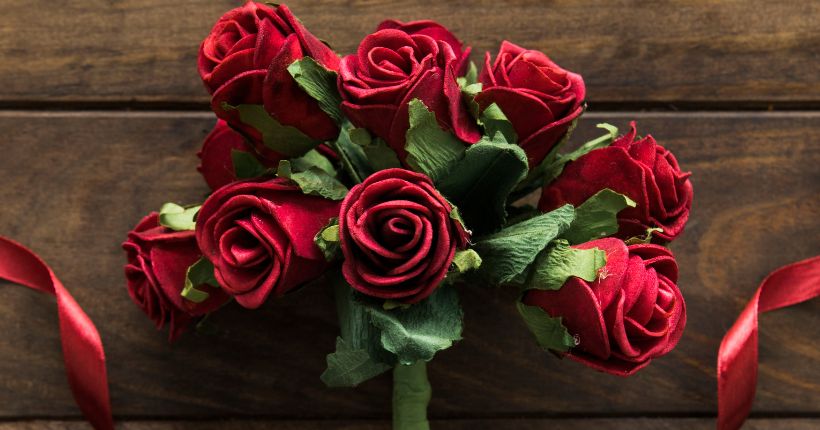
Expressions of Sympathy
While white flowers dominate sympathy arrangements, red roses have a quiet role there too, especially when the person lost was bold, passionate, or deeply loved. A single red rose on a casket can symbolize eternal devotion or heartfelt farewell, especially in crimson red shade.
In partner loss or the passing of a great love, red roses feel special, in their own way of gifting.
Red Roses in Art and Literature
Few flowers appear in global art and literature as often,or as vividly,as the red rose. This flower has always carried more than color and fragrance. It carries drama. Emotion. Conflict. Love.
In literature, red roses have become both a metaphor and a mirror:
- Robert Burns, “A Red, Red Rose” – A lyrical pledge of love that’s as passionate today as it was in the 18th century.
- William Blake, “The Sick Rose” – A haunting take on beauty, secrecy, and corruption, showing the rose as fragile yet dangerous.
- Oscar Wilde, “The Nightingale and the Rose” – A tragic tale of a nightingale’s sacrifice to create a red rose, pure romanticism laced with irony.
- Pablo Neruda – His poetry uses red roses as symbols of sensual love, longing, and earth-shaking intimacy.
- Umberto Eco, “The Name of the Rose” – While not focused on the flower itself, the red rose symbolizes forbidden knowledge and layered meaning.
In art, red roses appear in:
- Salvador Dalí’s “Meditative Rose” – A surrealist take that hovers between desire and transcendence.
- Georgia O’Keeffe’s bold floral studies – Here, the red rose becomes both sensual and abstract, inviting interpretation.
From painting to poetry, the red rose doesn’t just decorate. It deepens the message, whispering, “This is serious.”
When to Gift Red Roses (Beyond Valentine’s Day)
Sure, red roses have their own Valentine’s Day. But they deserve a lot more calendar space.
Apologies with Red Roses: When “I’m Sorry” Needs Heat
Saying sorry is hard. Saying it with red roses? A little easier, and a lot more honest. The intensity of the red signals sincerity, while the softness of the petals offers emotional vulnerability.
They say: “I mean this. And I want to make things right.”
Career Milestones: Why Red Roses Symbolize Victory
Red roses for work wins? Absolutely. Whether it’s a new job, a promotion, or hitting a long-term goal, they symbolize energy, persistence, and pride in one’s work. A bouquet here says, “I saw the effort. And I’m proud.”
Cultural Taboos: When Not to Gift Red Roses
Not every red rose moment is appropriate. In some Asian cultures, gifting red roses to colleagues or friends of the opposite sex may send the wrong message, coming off as overly intimate or romantic.
In conservative religious settings, red roses might feel too passionate or forward.
When in doubt, ask or choose a softer hue like white or blush pink.

Red Roses vs. Other Colors (Deeper Comparisons)
When it comes to roses, color isn’t just aesthetic, it’s emotional language. Each shade carries its own emotional weight, and understanding the difference helps you choose a bouquet that actually says what you mean.
Red vs. Pink: Romantic Love vs. Sweet Affection
Red roses are deep, burning declarations of love, the kind you’d give a long-term partner, a passionate crush, or someone you can’t stop thinking about. Pink roses, by contrast, are softer: gratitude, admiration, gentleness. Think Mother’s Day, thank-you gifts, or budding affection.
A red rose says, “I want you.” A pink one says, “I appreciate you.”
Red vs. Black: Passion vs. Mystery
Black roses are rare and symbolic, associated with endings, transformation, rebellion, or secrecy. Red roses are far more transparent. They’re about what’s already out in the open: full-blooded desire, vulnerability, and emotional risk.
A black rose is a secret. The red one is a confession.
Red vs. White: Love vs. Purity
White roses represent new beginnings, innocence, and respect,perfect for weddings, births, or farewells. Red roses belong to love that’s already taken root. They’re emotional, mature, and often, a little complicated.
White whispers. Red roars.
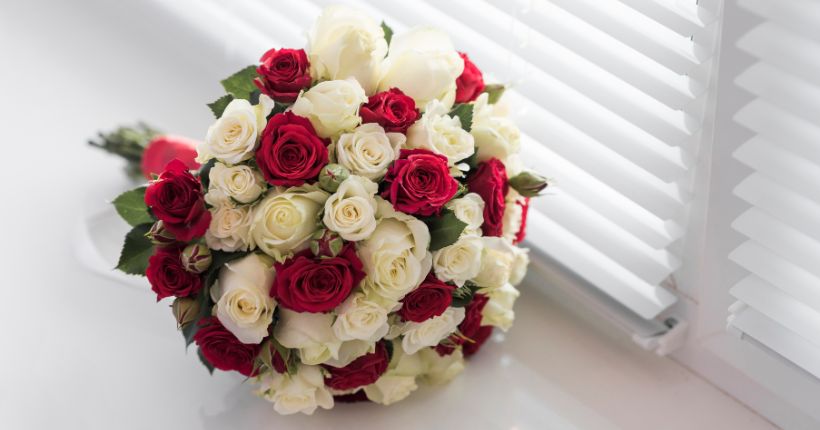
Conclusion
At the end of the day, red roses meaning is less about petals and more about emotion. These blooms are the language of passion, respect, apology, victory, and connection. They mark the moments that make our lives unforgettable.
When you hand someone a red rose, you’re not just giving them a flower. You’re giving them a feeling, a flash of intensity, a soft landing for hard truths, a fire that says “this matters.”
Whether it’s one bloom or a hundred, red roses never whisper. They tell the truth, even when we can’t.
Or as Rumi once said:
“The rose’s rarest essence lives in the thorns.”
Ready to say something big? Say it with red.
Now that you know the meaning of Red roses, dive deeper into the symbolism behind each color:
- Roses Meaning
- White Roses Meaning
- Blue Roses Meaning
- Pink Roses Meaning
- Yellow Roses Meaning
- Purple Roses Meaning
- Orange Roses Meaning
- Black Roses Meaning
Each color tells a story, find the perfect one for your occasion.

